
Q. I seem to have either a disease or parasite problem that kills my shrimp and saltwater fish. In my 125-gallon, fish-only display aquarium the water quality measurements are perfect: all nitrogen compounds read 0 by multiple test kits, pH 8.2, alkalinity 3.0 meq/l and specific gravity 1.022. The water is 78 degrees Fahrenheit.
My external plenum is larger in square inches than my display aquarium by about 20 percent. I have a 250-gallon bulk water aquarium with no plants and no protein skimmer. My plenum and bulk water are in my basement, and the display aquarium is on the first floor in the family room with T-5 lights. Also, I have a 65-gallon quarantine aquarium with a plenum and a 10-gallon hospital aquarium with an external filter using Chemi-Pure.
I set this system up about a year ago prior to setting up my hospital and quarantine aquariums. I have 1 inch of aragonite and 100 pounds of aragonite base rock in the display aquarium. I cycled the aquarium with 10 green chromis and a pair of captive-bred ocellaris clowns and a bunch of snails, both herbivores and detritus feeders. At three months, I added three butterflies and two tangs and six squarespot anthias a month later.
After about a month had gone by, I began losing my pet fish. Every day or two, I’d lose one. The fish swam erratically for about 12 hours and then died with no other observable symptoms or no distention.
I removed most of the live saltwater fish and placed them into a hospital aquarium (three chromis stayed in the display aquarium — I couldn’t catch them). I treated the hospital aquarium for bloat and everything else I could think of, but I still lost two or three more saltater fish. Then everything stabilized, and no more fish succumbed in either the display or hospital aquariums.
After another two months, I moved the hospital fish back to the display aquarium without any problems. I bought four more anthias and two tangs and put them in my hospital quarantine aquarium. Again, no problems. Two months after that I moved the new saltwater fish to the display aquarium. And now I’m losing fish again.
I’m ready to sterilize the whole system and start over.
I had pearl scale butterflyfish, long nose butterflyfish, raccoon butterflyfish, hippo tangs and sailfin tangs, but none survived. I selected as many captive-bred or captive-raised saltwater fish to reduce any chance of contamination.
I now have four pajama cardinals, a sailfin tang (added later but surviving) and a green chromis in my display aquarium. I also have a female tomato clown in my bulk water aquarium (too aggressive for my display aquarium). My quarantine aquarium houses two small skunk clowns and a small blue chromis. These fish all seem to be doing fine, so far.
I just hold the fish. The quarantine aquarium has a plenum constructed beneath it as a separate system, but I’m afraid that it may have been contaminated when I moved fish to it after I started losing fish.
I use one type of gravel, but it is layered using fiberglass window screen. I set it up with 1 inch of void space, using 3/4-inch PVC pipe topped with egg crate and window screen, then 2 inches of crushed coral, more window screen and 2 inches of additional crushed coral. Next, I use Caribsea Geo-Marine: Aragonite Formula Florida Crushed Coral (aragonite formula). My substrate’s grain size is from 2 mm to 10 mm with the majority of particles on the small end.
The aquarium is an All-Glass brand plumbed through the bottom with two overflows. The pumps move approximately 600 gallons per hour, and there are four additional powerheads inside the aquarium. The aquarium is covered with glass. The bulk water and plenum containers are covered. They’re made from sealed polyethylene aquariums from Aquatic Eco Systems. These were drilled for 2-inch bulkheads with small openings in the top for maintenance or for building the plenum. They are covered with 1/4-inch clear acrylic sheets cut to fit.
I’d appreciate any advice that you can give me.
Ken Cox
A. Basically, the problem you’ve encountered revolves around two themes.
1) Fish choice/disease
2) Gas exchange
A deep sandbed consumes oxygen, and a covered aquarium has a hard time replenishing the lost oxygen. Tangs are notoriously prone to getting sick and then getting the rest of your saltwater fish sick. They are sometimes called ich magnets for this reason. Their sensitivity to disease is at least in part due to oxygen level sensitivity below saturation. Butterflyfish are the ones likely to get sick after the tangs. So you had a one-two combination. The anthias are also sensitive to oxygen, though they are fairly disease resistant.
Your success with certain fish tells you that the aquarium does not have the cooties, as you initially believed. You could simply focus on keeping fish that are capable of living in your system, but I suspect you won’t be satisfied with that suggestion.
If you want to broaden the palette of color and species in your display, you need to do something about gas exchange. I understand covering the display aquarium—that prevents fish from jumping. Covering the sump (in your case, the plenum aquarium) serves no purpose other than to slow evaporation. It may also keep salt spray from being emitted into the room. The evaporation issue is not too bad, especially if you automate the top-off with a dosing pump. The salt spray issue is serious, because it can result in corrosion, wall damage and divorce. Fortunately, there are ways to reduce the popping of bubbles from the drainpipe, be it with the use of a foam block or sleeve at the water outlet, or a series of baffles.
Removing the lid from the sump would help with the gas exchange issue. Based on your use of 1/4-inch acrylic lids, I expect that the covers are not too tight (acrylic normally warps if used as a lid over an aquarium). Another improvement would be to grow Caulerpa or Chaetomorpha (or other algae) in the sump on top of the gravel. You would need to install some kind of lighting system to promote their growth. This would give the benefit of boosting oxygen levels while also removing some nitrogenous waste and phosphate.
You could use the algae additionally as a supplemental fish food for your herbivorous saltwater fishes. Illuminating the algae at night (when the lights are off in the display) would provide the oxygen boost right when it would otherwise drop. It would also help to prevent the nighttime pH drop because the photosynthesis by algae consumes carbon dioxide from the water. This opposite light cycle is called reverse daylight photosynthesis, and it was first proposed by Walter Adey as a means of stabilizing oxygen and pH in closed system aquariums.
It sounds like your plenums are constructed correctly.
If you want to try tangs again, first try a sailfin tang, purple tang or yellow tang. The zebrasoma tangs are much hardier and more disease resistant than hepatus tangs, or any member of the genus Acanthurus.
In the future, if you find that fish are dropping dead en masse, it would help to have someone look at a fresh scraping of the skin and gills to try to pinpoint a specific parasite. Without knowing what you are dealing with, treatment with drugs is a crapshoot.
One other thing—on the subject of oxygen levels and deep sandbeds—it is always a possibility to develop hydrogen sulfide pockets in the sand/gravel, especially when the aquarium is covered and oxygen levels remain below saturation for a large part of the night. Having a large quantity of rock on the sandbed further promotes hydrogen sulfide formation. When hydrogen sulfide enters into the bulk aquarium water, the responses by the fish are typical.
In very small concentrations they become irritated and swim erratically, breathing heavily. This can look like parasitic disease. The telltale symptom is that they behave this way first thing in the morning and then improve as the lights are on, which elevates the oxygen concentration and effectively eliminates the cause for the symptoms. With higher nighttime hydrogen sulfide concentrations (usually accompanied by a low dissolved oxygen concentration), the fish are just dead in the morning. If that sounds like what you saw, the problem may have had nothing to do with disease.
Reader Response
I can’t thank you enough. Oxygen levels! I should have thought of that myself. I was too focused on reducing evaporation and, as you pointed out, salt creep. I have an auto-topping system installed with about 60 gallons of R/O/DI water in the reservoir. I had a 2-gallon plastic refugium with Caulerpa that I removed.
As you suggest, I will check the oxygen levels, but I’m sure that you are right. I will also re-establish the refugium and remove the covers from my plenum and bulk water aquariums.
In the past I have left the refugium lights on 24 hours a day, seven days a week. Do you recommend this (I do not have macroalgae in the display aquarium)?
I appreciate you taking the time to solve this puzzle. My fish thank you, too.
Ken Cox
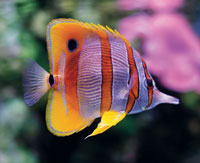 Aiptasia Anemone
Aiptasia Anemone
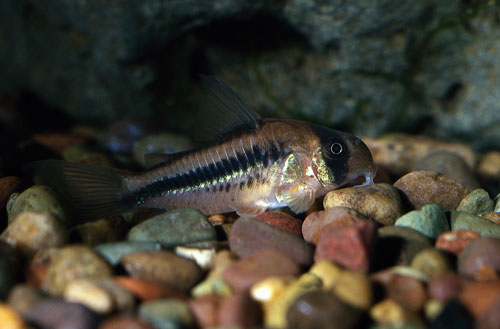 Top 10 Fishkeeping Mistakes
Aquarists can say they’ve never made a mistake in their fish
Top 10 Fishkeeping Mistakes
Aquarists can say they’ve never made a mistake in their fish
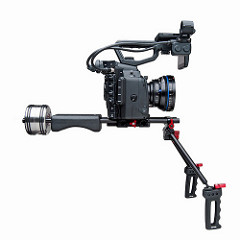 Catch More Salmon - Follow These Simple To Implement Techniques
FLAT Rigs outriggers, shock cord snubber, and rigging kit i
Catch More Salmon - Follow These Simple To Implement Techniques
FLAT Rigs outriggers, shock cord snubber, and rigging kit i
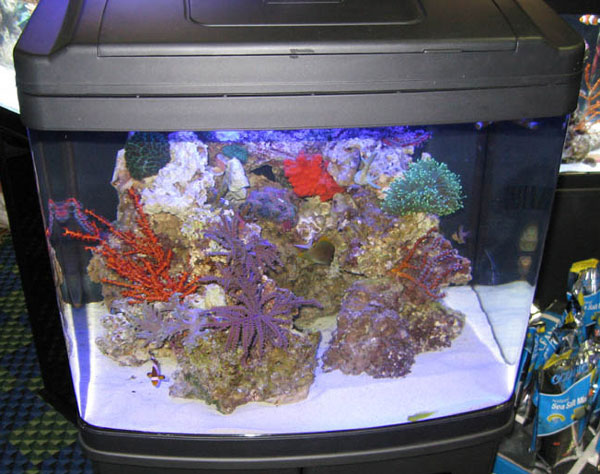 Marine Nano Tank Problems
Marine Nano Tank Problems
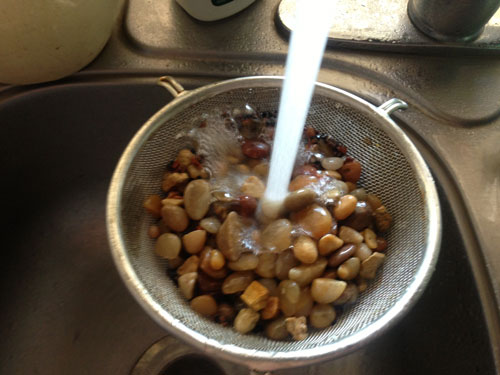 How to Get Rid of Cloudy Aquarium Water
Occasional cloudy water is an issue for nearly all aquarists
How to Get Rid of Cloudy Aquarium Water
Occasional cloudy water is an issue for nearly all aquarists
Copyright © 2005-2016 Pet Information All Rights Reserved
Contact us: www162date@outlook.com